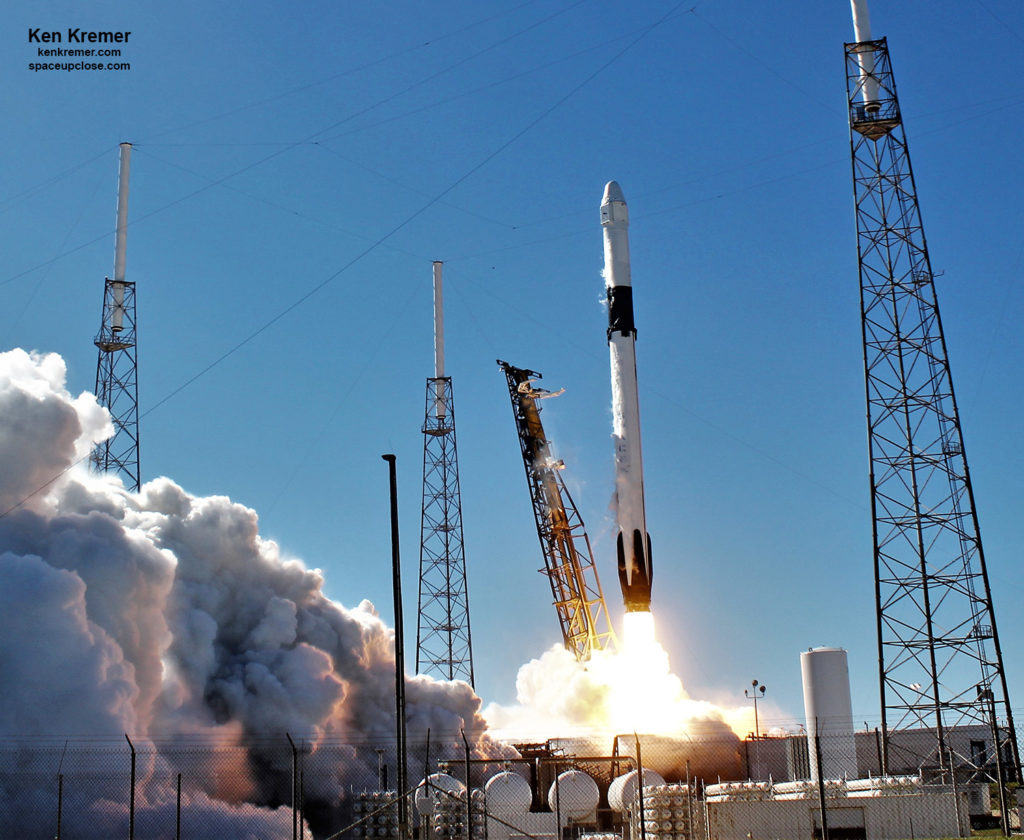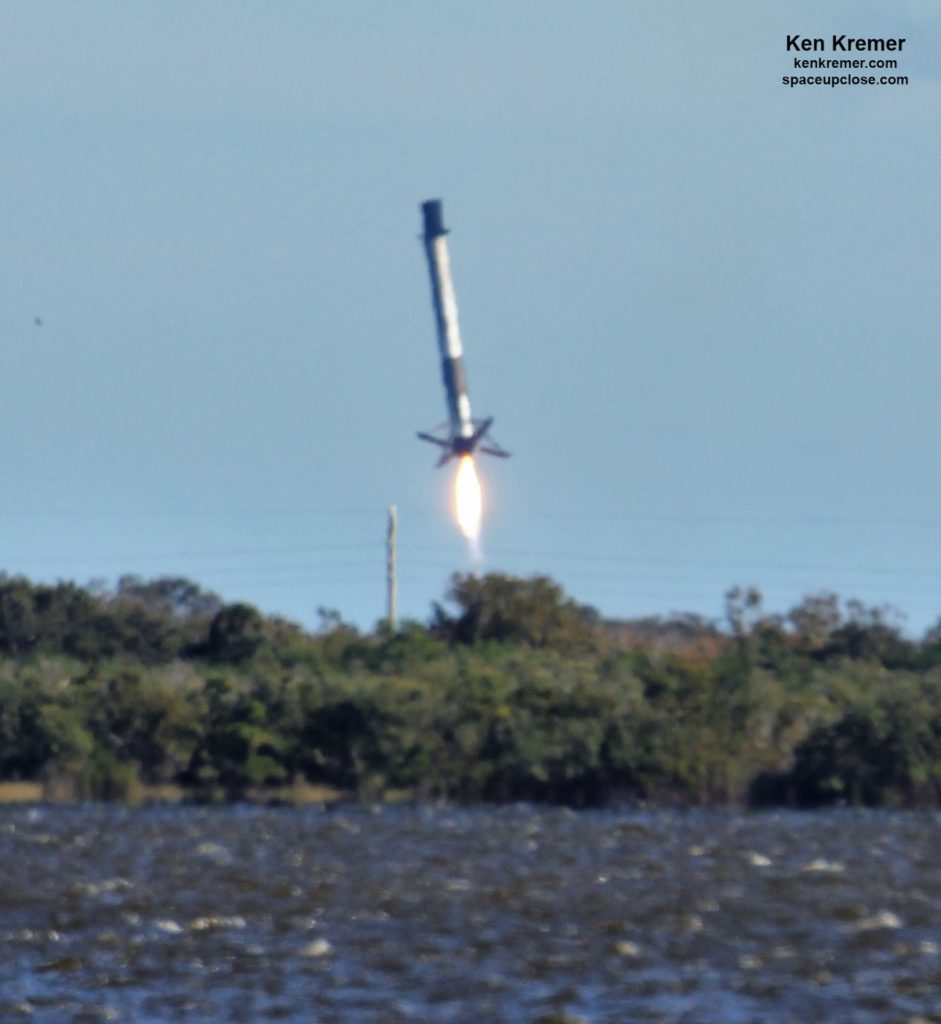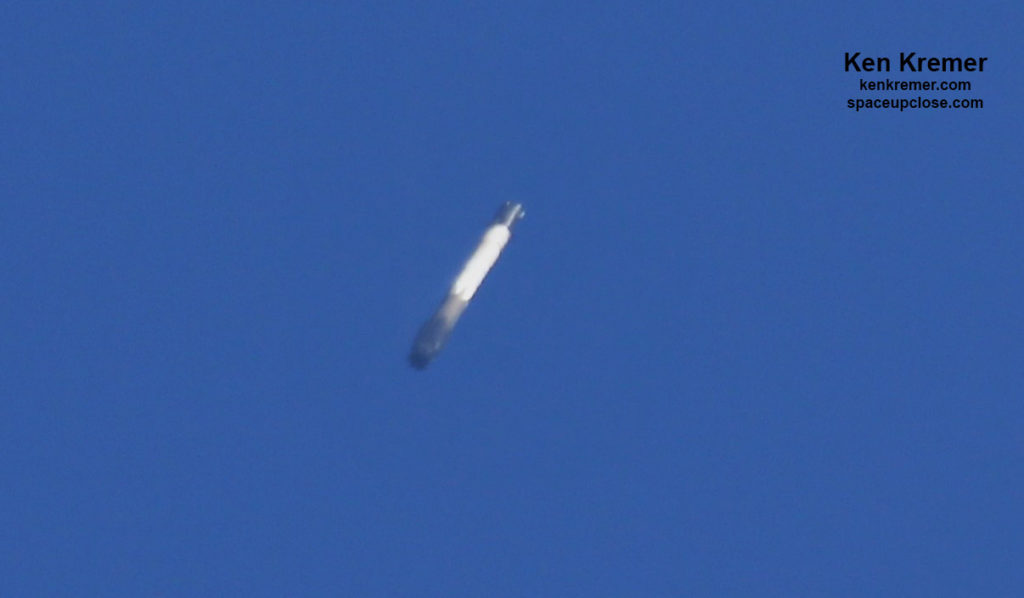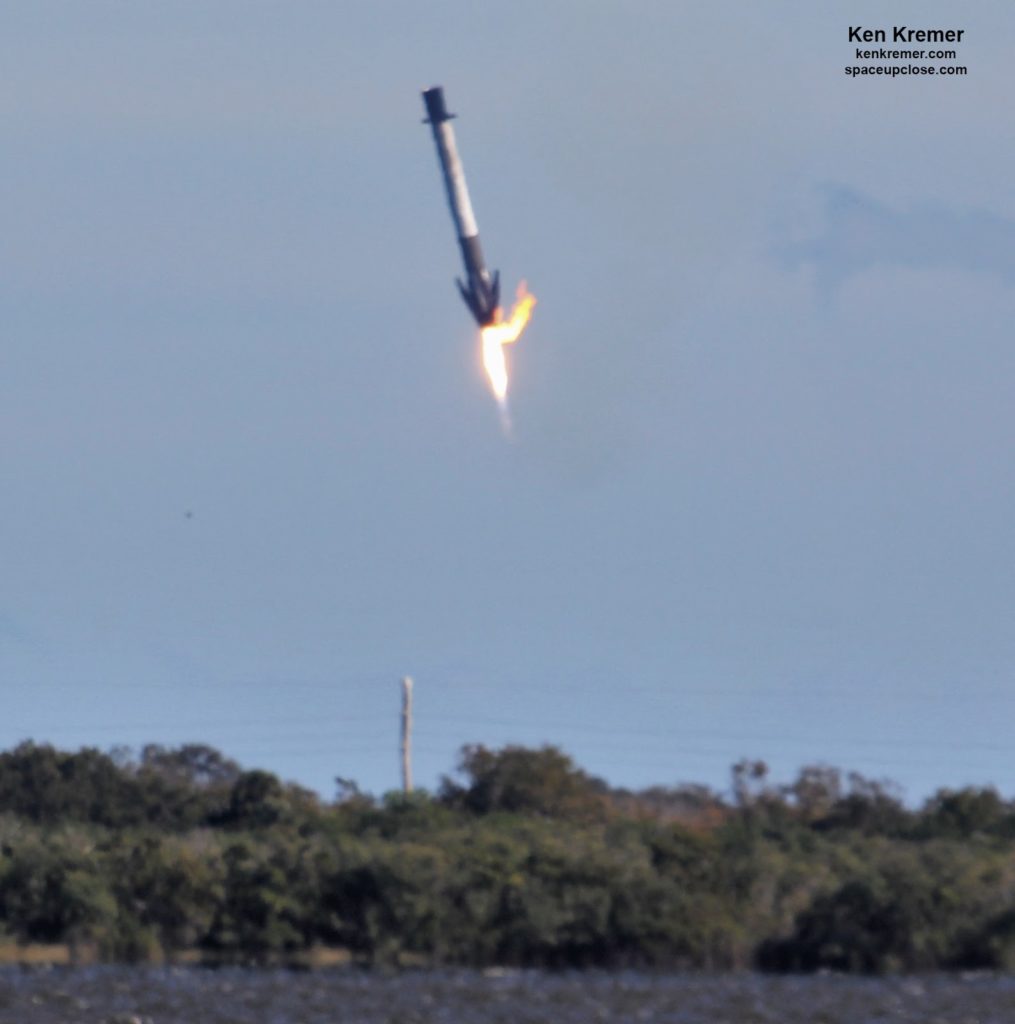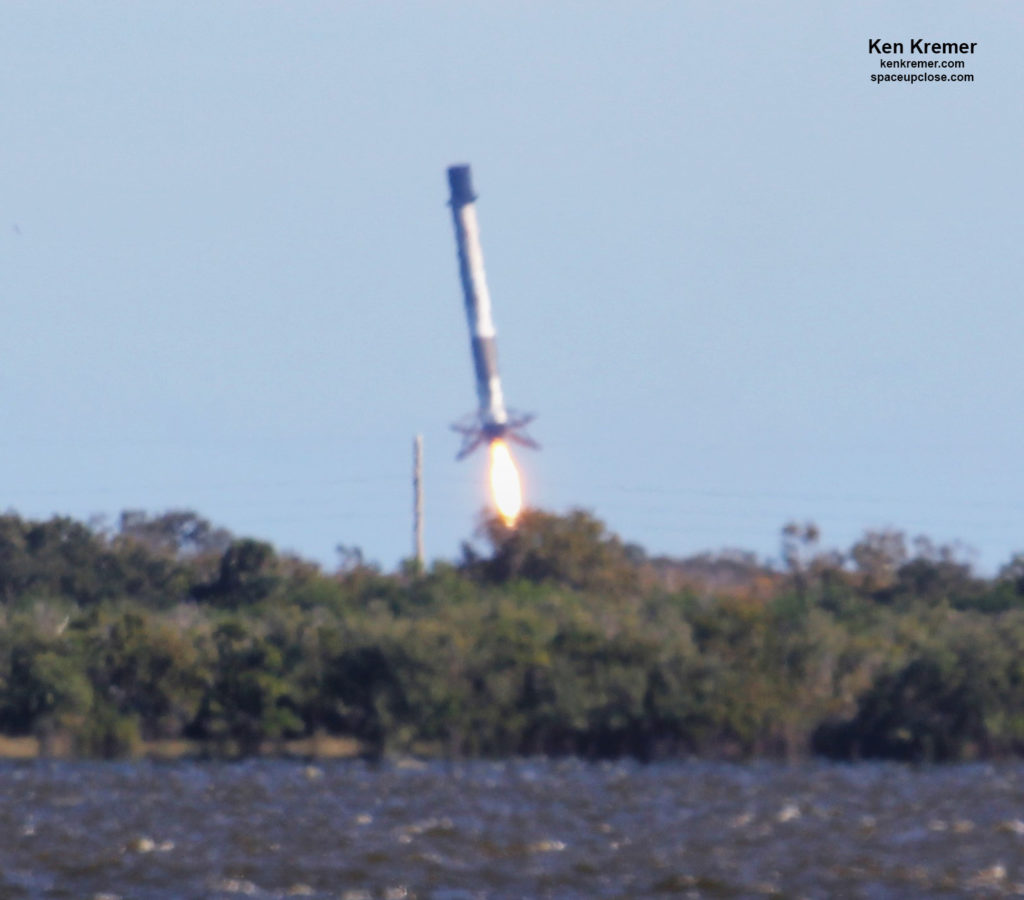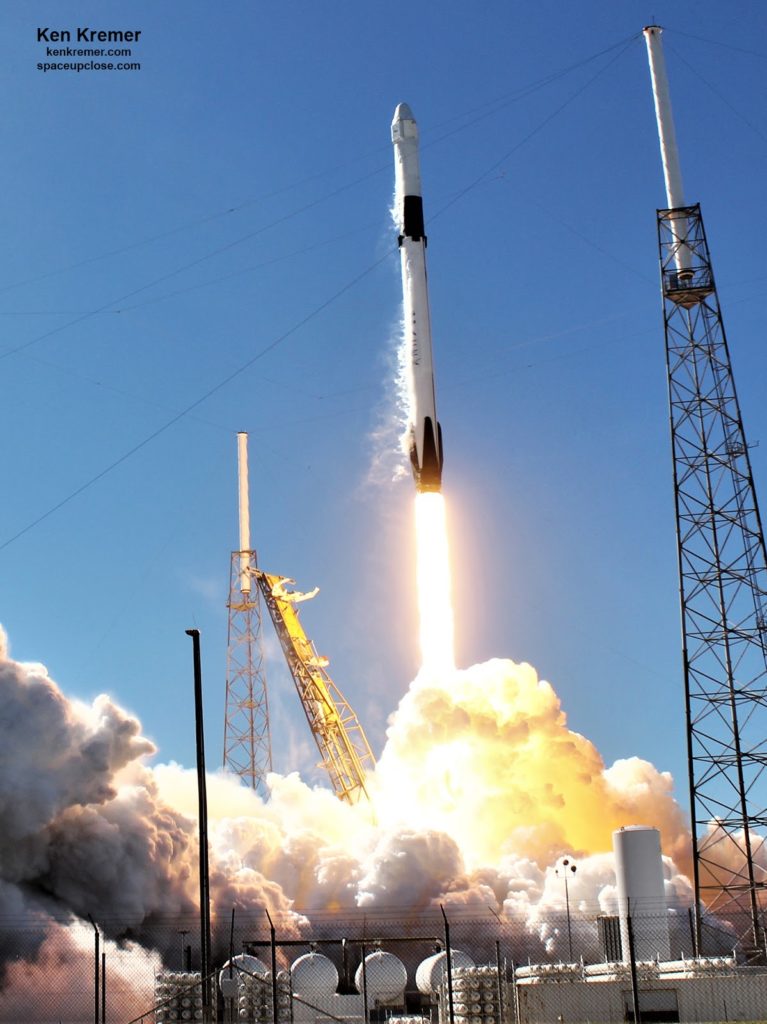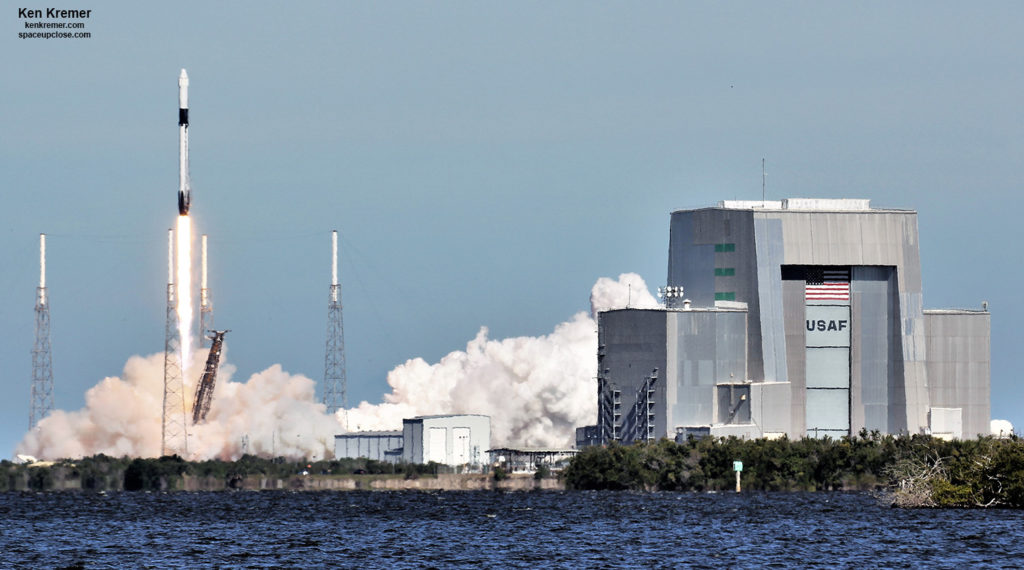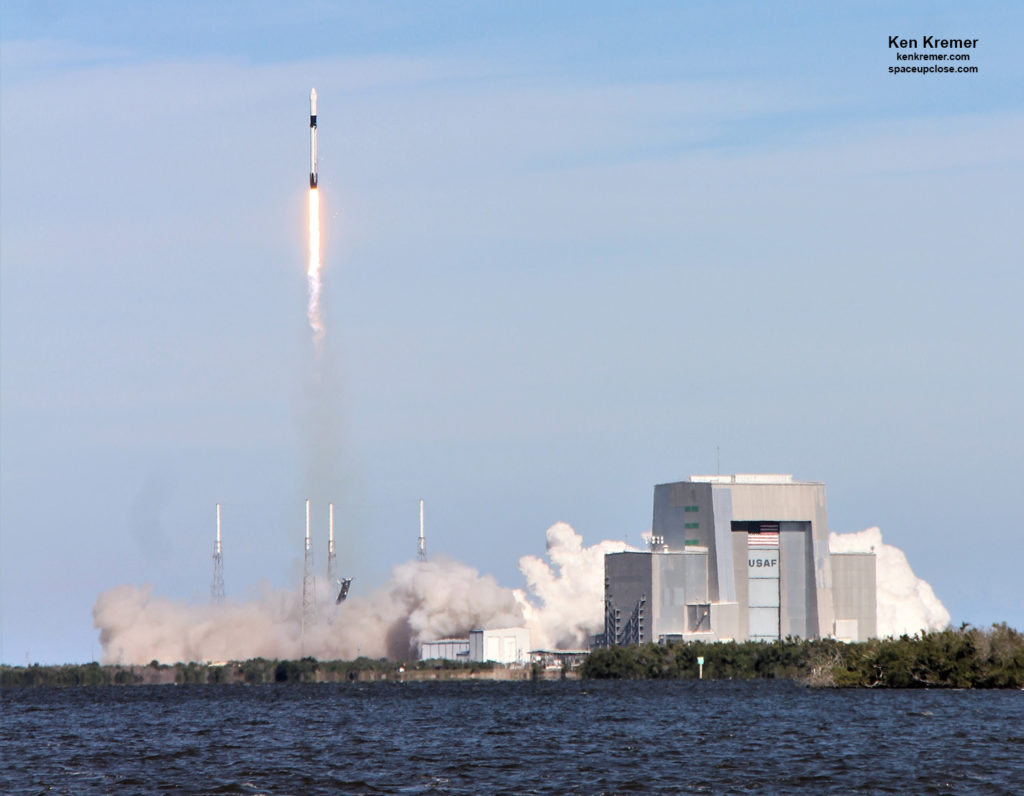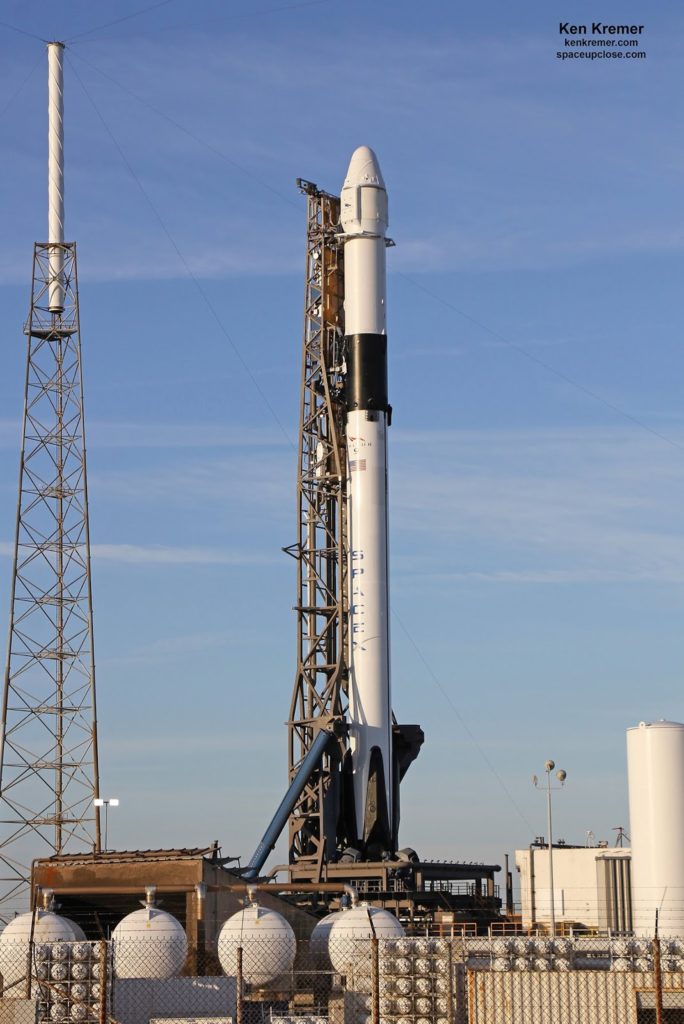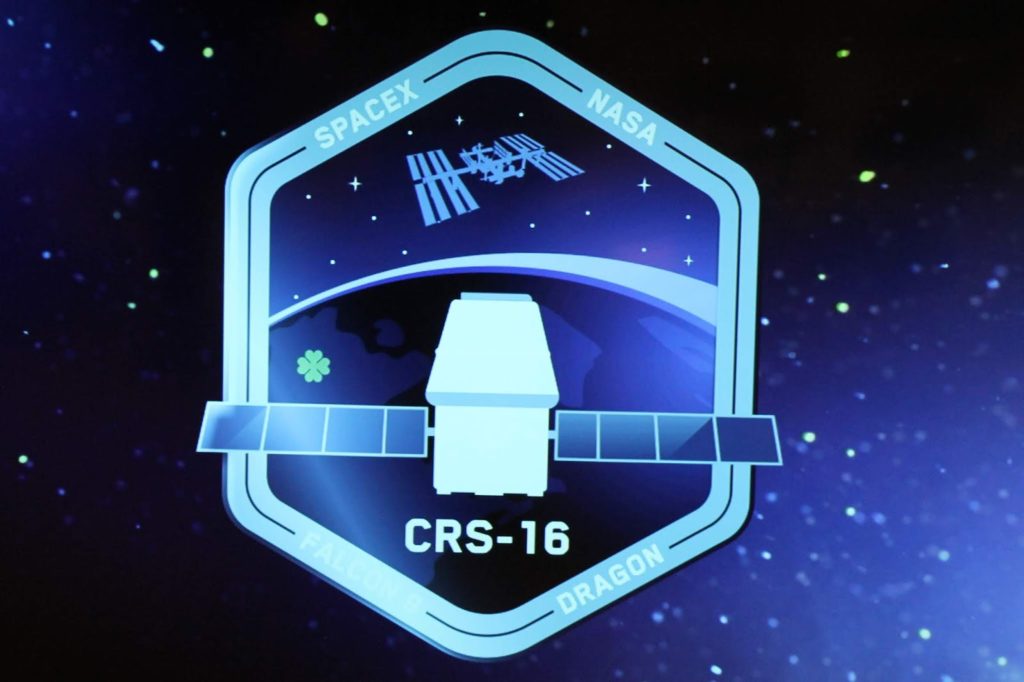RocketSTEM –5 December 2018
KENNEDY SPACE CENTER,
FL – After a SpaceX Falcon 9
successfully launched a Dragon cargo ship to the International Space Station (ISS)
for NASA loaded with nearly 3 tons of critical research, hardware and supplies today,
Wednesday, Dec. 5, the planned landing attempt
to recover the first stage booster back on the ground minutes later failed – although
the good news is it was safely aborted to slightly offshore at sea with no
danger to population centers or infrastructure.
The aborted land landing
of the 15-story-tall booster amounts to a rare setback in rocket recycling for
SpaceX which really plays second fiddle to the overarching goal of the mission –
launching a Dragon resupply spaceship to the astronauts and cosmonauts living
and working about the million-pound Earth orbiting science laboratory.
Note: Story being updated
Check out our Space UpClose eyewitness gallery of imagery
of the launch and landing as well as prelaunch imagery taken of the Falcon 9
standing tall at pad 40 during our media remote camera.
As it plummeted back to
Earth and neared its planned Florida Space Coast landing site on land at
Landing Zone-1 on Cape Canaveral Air Force Station the booster was visibly spinning
out of control – unlike anything seen in
prior land landings back at the cape.
The booster was
spinning along its long axis and tilting up and down and at moments looked like
it could crash land.
Fortunately, SpaceX
engineers had designed in many abort modes to ensure that an off target booster
could be directed to land in the ocean and not move the impact point to on land
and thereby keep well away from populated areas in case of a malfunction, said
SpaceX.
“The important point here is we have a safety function on board
that makes sure the vehicle does not go on land until everything is OK,
and that worked perfectly,” Hans Koenigsmann, SpaceX vice president of build
and flight reliability, said at the post launch briefing at KSC.
“The vehicle kept well away
from anything where it could pose even the slightest risk to population or
property.
“Public safety was well protected here. As much as we are disappointed in this
landing, or landing in the water, it shows the system overall knows how to
recover from certain malfunctions.”
landed’ upright and intact perhaps no more than 1 to 2 miles offshore in the Atlantic
Ocean – several miles north of LZ-1.
Moments later it tilted
and fell over winding up horizontal on the ocean surface and floating with one
leg pointed straight up. That made for
an incredible sight straight out of science fiction.
Even more incredible
is the fact that the booster was still alive and transmitting valuable data on
its health and status. Recovery ships were soon dispatched.
The culprit was with a
failure of the titanium grid fins to move as directed for steering purposes to maintain stability due
to a failed hydraulic pump, said SpaceX CEO Elon Musk in a tweet.
“Grid fin
hydraulic pump stalled, so Falcon landed just out to sea,” Musk tweeted. “Appears
to be undamaged & is transmitting data. Recovery ship dispatched.”
But then it righted
itself almost vertically as normal in the final moments.
However it was visibly
many miles away from the intended landing spot as I had witnessed several times
previously.
As it neared the
ground a single engine fired and the rocket regained some control as the four
landing legs deployed. But it was still spinning and tilting as a consequence of
the grid fin failure.
“Engines stabilized rocket spin just in time,
enabling an intact landing in water! Ships en route to rescue Falcon,” Musk
tweeted – along with a spectacular rockets eye descent view of the spinning Falcon
until touchdown and tumbling over.
Watch video here:
https://twitter.com/elonmusk/status/1070399755526656000
The dramatic splashdown
video was released by Musk soon after the launch. The live view during the launch
webcast had ended by mistake Musk said. So he tweeted it out soon thereafter.
Unbeknownst to us media
watching from just a few miles away, the guidance system had retargeted the
booster away from land and towards a landing spot just off shore in the
Atlantic Ocean after the engine firing regained control of the descent for a water ditch splashdown.
After landing upright
it spun around and titled over completely then fell into the water as a brief explosion
erupted. The flames doused quickly
leaving the Falcon intact and floating horizontally
in the ocean.
In response to the landing
mishap Musk said the hydraulic pump stsem did not have a back up and will be modified.
“Pump is
single string. Some landing systems are not redundant, as landing is considered
ground safety critical, but not mission critical. Given this event, we will
likely add a backup pump & lines,” Musk tweeted.
Thus the landing mishap
can be characterized as a ‘successful failure’ because the abort scenarios work
as SpaceX engineers had intended.
launch itself was spectacular and fully successful in starting the Dragon CRS-16
spacecraft on its three day journey to the ISS.
the flawless blastoff
of the new SpaceX Falcon 9 rocket and Dragon CRS-16 commercial cargo freighter right
on time Wednesday afternoon December 5 as all nine first stage Merlin 1D engines roared to life and ignited
with 1.8 million pounds of liftoff thrust at 1:16 p.m. EST (1816 GMT) from Space Launch Complex 40 at Cape Canaveral Air Force
Station in Florida.
mission for NASA was postponed a day from Tuesday Dec 4 to Wednesday afternoon, Dec. 5 to remove and replace the contaminated bars of mouse food.
The late breaking discovery
of what amounts to moldy mouse meals getting ready to be flown to space aboard the
commercial Dragon cargo ship bound for the ISS forced NASA and SpaceX to delay
the liftoff on the Falcon 9 carrier rocket from Florida’s Space Coast by 24
hours from Tuesday to Wednesday afternoon, Dec. 5.
The instantaneous
launch window meant there was no margin for error or delay in case of a last
moment technical glitch or weather issue – none of which happened.
Dragon CRS-16 is
loaded with nearly 3 tons of science and supplies for the newly expanded six person
Expedition 57 crew currently living and working aboard the ISS including the three
new crewmembers launched Dec. 3 on a Russian Soyuz rocket and spacecraft from
Baikonur.
materials to directly support dozens of the science and research investigations
that will occur during the space station’s Expeditions 57 and 58.
on the CRS-10 mission to the station.
high, 12-foot-diameter Dragon CRS-16 vessel is jam packed with more than 5,673 pounds (about 2,573 kilograms) of science
experiments, research hardware, space parts, food water, clothing and more
supplies for the six person Expedition 57 and 58 crews.
outpost on Dec. 8 and be captured by the crew for installation on the Harmony
module for a month long stay.
foot long Canadian-built Canadarm2robotic arm to grapple Dragon. They will be assisted by recently launched
payloads on board include:
refueling techniques in microgravity and the Global Ecosystem Dynamics Investigation lidar,
or GEDI for global forest measurement, the Rodent Research experiment looking into
the aging process and crystallization experiments to aid in finding a cure or Parkinson’s
disease.
Dragon
“The Global Ecosystem Dynamics Investigation (GEDI)
will provide high-quality laser ranging observations of the Earth’s forests and
topography required to advance the understanding of important carbon and water
cycling processes, biodiversity, and habitat. GEDI will be mounted on the
Japanese Experiment Module’s Exposed Facility and provide the first
high-resolution observations of forest vertical structure at a global scale.
These observations will quantify the aboveground carbon stored in vegetation and
changes that result from vegetation disturbance and recovery, the potential for
forests to sequester carbon in the future, and habitat structure and its
influence on habitat quality and biodiversity.
A small satellite deployment mechanism, called SlingShot,
will be ride up in Dragon and then be installed in a Northrop Grumman Cygnus
spacecraft prior to its departure from the space station. SlingShot can
accommodate as many as 18 CubeSats of any format. After the Cygnus cargo ship
departs from station, the spacecraft navigates to an altitude of 280 to 310
miles (an orbit higher than that of the space station) to deploy the
satellites.
Robotic Refueling Mission-3 (RRM3)
will demonstrate the first transfer and long-term storage of liquid methane, a
cryogenic fluid, in microgravity. The ability to replenish and store cryogenic
fluids, which can function as a fuel or coolant, will help enable long duration
journeys to destinations, such as the Moon and Mars.
Growth of Large, Perfect Protein Crystals for Neutron
Crystallography (Perfect Crystals)
crystallizes an antioxidant protein found inside the human body to analyze its
shape. This research may shed light on how the protein helps protect the human
body from ionizing radiation and oxidants created as a byproduct of metabolism.
For best results, analysis requires large crystals with minimal imperfections,
which are more easily produced in the microgravity environment of the space
station.”
Watch my commentary about the successful launch
and ‘successful failure’ of the retargeted aborted landing here at Fox 35 News Orlando, FL:
http://www.fox35orlando.com/news/local-news/spacex-falcon-9-launch-scheduled-for-wednesday-afternoon
 |
|
Dr Ken Kremer/Space
UpClose interviewed by Fox 35 News Orlando about the SpaceX Dragon mission and the landing failure. |
from pad 40.
The two stage Falcon 9/Dragon rocket stands
about 213-feet (65-meters) tall.
To date SpaceX has successfully landed 32 1st stage
rockets by land and by sea. And they have reused 17 of those 15 story tall boosters
since the first relaunch in March 2017 relaunch for SES.
CRS-16 marks the 20th flight overall for SpaceX
in 2018 and the 4th ISS resupply mission for NASA in 2018.
SpaceX was awarded a $3.04
Billion contract from NASA to launch 20 Dragon cargo missions to the orbiting outpost
through 2019 under the Commercial Resupply Services (CRS) agreement.
continuing onsite coverage of NASA, SpaceX, ULA, Boeing, Lockheed Martin, Northrop
Grumman and more space and mission reports direct from the Kennedy Space Center,
Cape Canaveral Air Force Station, Florida and Wallops Flight Facility,
Virginia.
and human spaceflight news: www.kenkremer.com –www.spaceupclose.com – twitter
@ken_kremer – email: ken at kenkremer.com
journalist and photographer based in the KSC area.
Ken’s photos are for sale and he is available for lectures and outreach events
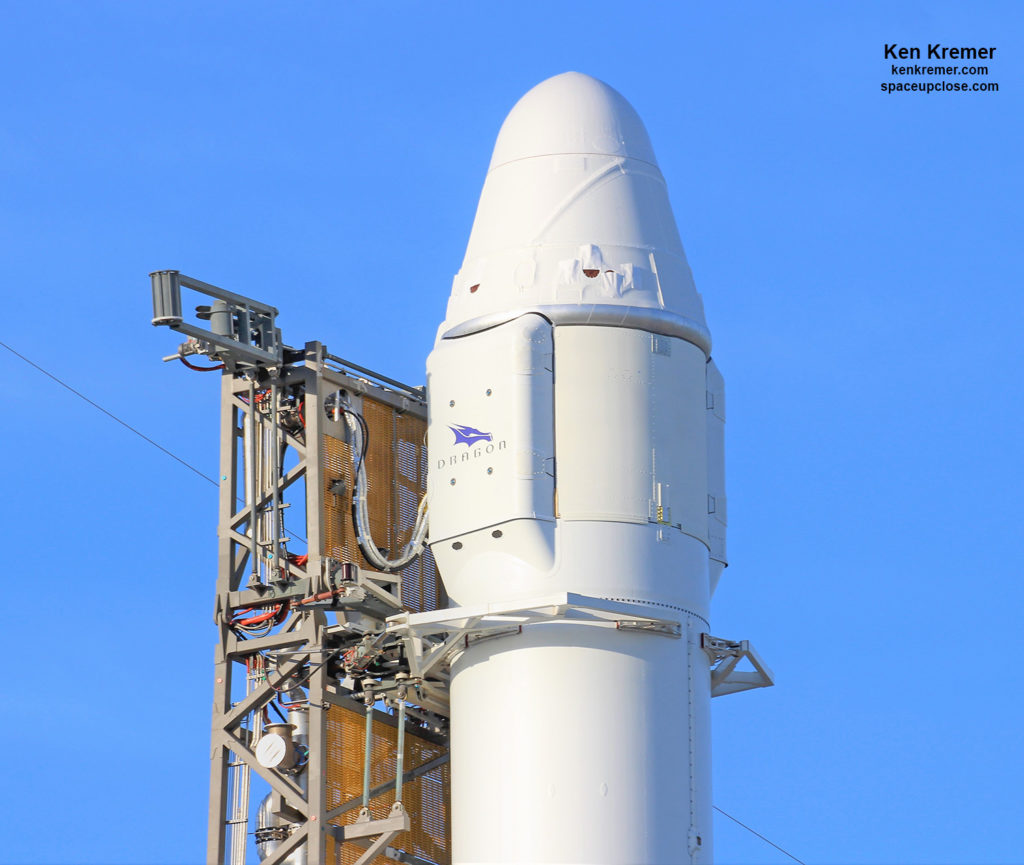 |


